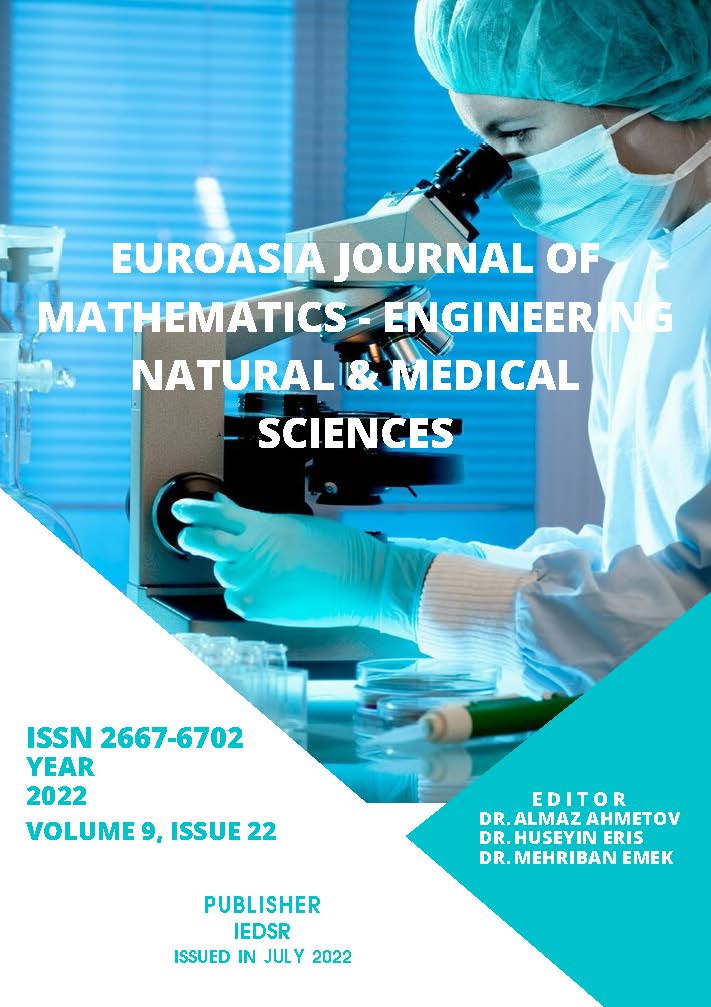Dermatophytosis in Cats and Treatment Choices
DOI:
https://doi.org/10.5281/zenodo.6946398Keywords:
Cat, dermatophytosisAbstract
Dermatophytosis is commonly appeared in the world and it is the most important fungal disease of cats. It may be transmitted to other animals and humans. Primary transmission way is direct contact or from the traumatic sites. Primary pathogen of cats is Microsporium (M.) canis, but outdoor cats are contracted to Trichophyton (T.) spp. infection. Dermatophytes are aerobic fungi that infect skin, hair and nails. Dermatophytes frequently determined in cats are M. canis, M. gypseum, M. persicolor and T. mentagrophytes, T. quinckeanum and T. verrucosum. These agents except M. gypseum grow in keratinized epidermal tissue (mostly stratum corneum, hairs, rarely nails) and produce proteolytic and keratolytic enzymes to use keratin as a nutrition source. Normal fungal flora of indoor cats is different. The most isolated saprophytes are Aspergillus, Alternaria, Penicillium and Cladosporium spp. Fungal diseases due to dermatophytes in cats because of these reasons are highly important. In this context of this review, primary dermatophytes causing fungal infections in cats are explained. Knowledge was given about which drugs are effective to which dermatophyte infection by searching recent scientific sources in detail. Extensive knowledge was given for clinical applications required depending on variety and severity of prevailing clinical signs in cats with fungal disease by dermatophyte agents, and different drug or drug combinations to be used. In addition, in respect to providing veterinary clinicians with practical convenience, important knowledge was separately presented in tables including general doses and frequencies of systemic antifungal drugs primarily chosen set a treatment choice in fungal diseases in cats and administration ways and general doses of systemic antifungal drugs to be chosen for dermatophytosis treatment.
References
Colombo, S., Cornegliani, L., & Vercelli, A. (2001). Efficacy of itraconazole as combined continuous/pulse therapy in feline dermatohytosis: preliminary results in nine cases. Veterinary Dermatology, 12, 347-350.
Colombo, S., Scarampella, F., Ordeix, L., & Roccabianca, P. (2012). Dermatophytosis and papular eosinophilic/mastocytic dermatitis (urticaria pigmentaso-like dermatitis) in three Devon Rex cats. Journal of Feline Medicine and Surgery, 14, 498-502.
Dahl, M. V. (1993). Suppression of immunity and inflammation by products produced by dermatophytes. Journal of the American Academy of Dermatology, 28, S19-S23.
DeBoer, D. J., & Moriello, K. A. (1993). Humoral and cellular immune response to Microsporium canis in naturally occurring feline dermatophytosis. Journal of Medical and Veterinary Mycology, 31, 121-132.
DeTar, L. G., Dubrovsky, V., & Scarlett, J. M. (2019). Descriptive epidemiology and test characteristics of cats diagnosed with Microsporium canis dermatophytosis in a Northwestern US animal shelter. Journal of Feline Medicine and Surgery, 21(12), 1198-1205.
Evason, M., & Loeffler, A. (2020). Dermatophytosis (Ringworm). In: Infectious Diseases of the Dog and Cat, Weese JS, Evason M (Eds), CRC Press, Taylor and Francis Group.
Frymus, T., Gruffydd-Jones, T., Pennisi, M. G., Addie, D., Belak, S., Boucraut-Baralon, C., Egberink, H., ….. Horzinek, M. C. (2013). Dermatophytosis in cats. ABCD guidelines on prevention and management. Journal of Feline Medicine and Surgery, 15, 598-604.
Giguere, S. (2013). Antifungal chemotherapy. In: Antimicrobial Therapy in Veterinary Medicine, Giguere S, Prescott JF, Dowling PM, Fifth Edition, Wiley Blackwell.
Grando, S., Herron, M., Dahl, M. V., & Nelson, R. D. (1992). Binding and uptake of Trichophyton rubrum mannan by human epidermal keratinocytes: a time-course study. Acta Dermato-Venereologica, 72, 273-276.
Gordon, E., Idle, A., & DeTar, L. (2020). Descriptive epidemiology of companion animal dermatophytosis in a Canadian Pacific Northwest animal shelter system. Canadian Veterinary Journal, 61, 763-770.
Hnilica, K. A., & Medleau, L. (2002). Evaluation of topically applied enilconazole for the treatment of dermatophytosis in a Persian cattery. Veterinary Dermatology, 13, 23-28.
Hsiao, Y. H., Chen, C., Han, H. S., & Kano, R. (2018). The first report of terbinafine resistance Microsporum canis from a cat. Journal of Veterinary Medical Science, 17-0680.
Ilhan, Z., Karaca, M., Ekin, I. H., Solmaz, H., Akkan, H. A., & Tutuncu, M. (2016). Detection of seasonal asymptomatic dermatophytes in Van cats. Brasilian Journal of Microbiology, 47, 225-250.
Ivaskiene, M., Matusevicius, A. P., Grigonis, A., Zamokas, G., & Babickaite, L. (2016). Efficacy of topical therapy with newly developed terbinafine and econazole formulations in the treatment of dermatophytosis in cats. Polish Journal of Veterinary Sciences, 19(3), 535-543.
Moriello, K. A., & DeBoer, D. J. (2012). Dermatophytosis. In: Greene CE (ed). Infectious diseases of the dog and cat. 4th ed. St Louis: Elsevier, 588-602.
Moriello, K. (2014). Feline Dermatophytosis. Aspects pertinent to disease management in single and multiple cat situations. Journal of Feline Medicine and Surgery, 16, 419-431.
Moriello, K. A., Coyner, K., Paterson, S., & Mignon, B. (2017). Diagnosis and treatment of dermatophytosis in dogs and cats: Clinical Consensus Guidelines of the World Association for Veterinary Dermatology. Veterinary Dermatology, 28, 266-e68.
Moriello, K. A. (2020). Dermatophytosis. In: Feline Dermatology, Noli C, Colombo S. (Eds), Springer Nature Switzerland AG.
Načeradská, M., Fridrichová, M., Kolářová, M. F., & Krejčová, T. (2021). Novel approach of dermatophytosis eradication in shelters: effect of Pythium oligandrum on Microsporum canis in FIV or FeLV positive cats. BMC veterinary research, 17(1), 1-10.
Nardoni, S., Mugnaini, L., Papini, R., Fiaschi, M., & Mancianti, F. (2013). Canine and feline dermatophytosis due to Microsporum gypseum: a retrospective study of clinical data and therapy outcome with griseofulvin. Journal de Mycologie Medicale, 23(3), 164-167.
Sierra, P., Guillot, J., Jacob, H., Bussieras, S., & Chermette, R. (2000). Fungal flora on cutaneous and mucosal surfaces of cats infected with feline immunodeficiency virus and feline leukemia virus. American Journal of Veterinary Research, 61(2), 158-161.
Sparkes, A. H., Stokes, C. R., & Gruffydd-Jones, T. J. (1995). Experimental Microsporium canis infection in cats: Correlation between immunological and clinical observations. Journal of Medical and Veterinary Mycology, 33, 177-184.
Ziglioli, V., Panciera, D. L., LeRoith, T., Wiederhold, N., & Sutton, D. (2016). Invasive Microsporium canis causing rhinitis and stomatitis in a cat. Journal of Small Animal Practice, 57, 327-331.
Downloads
Published
How to Cite
Issue
Section
License
Copyright (c) 2022 Euroasia Journal of Mathematics, Engineering, Natural & Medical Sciences

This work is licensed under a Creative Commons Attribution-NonCommercial 4.0 International License.


